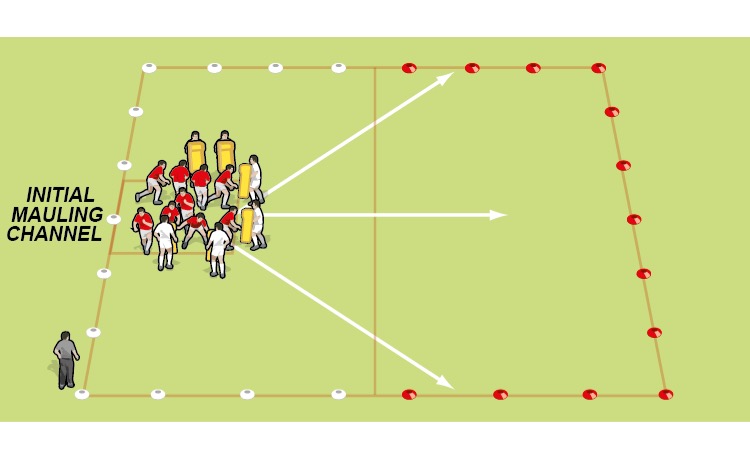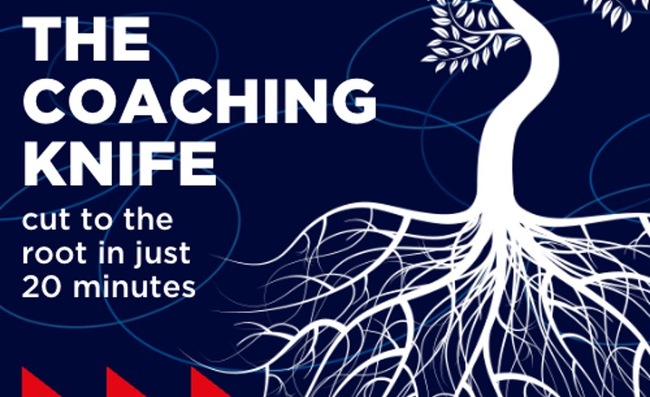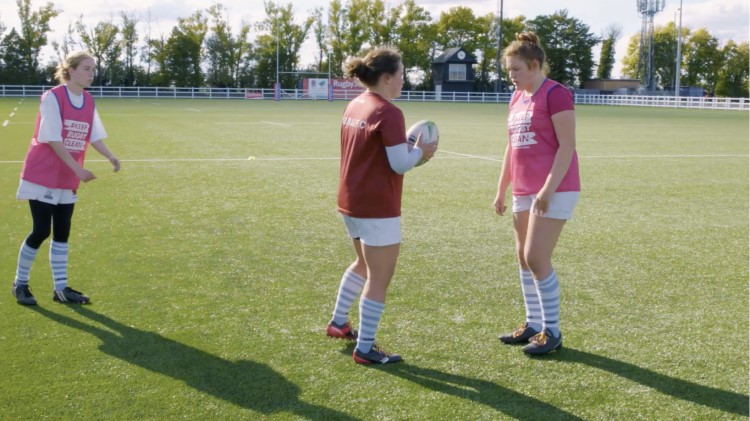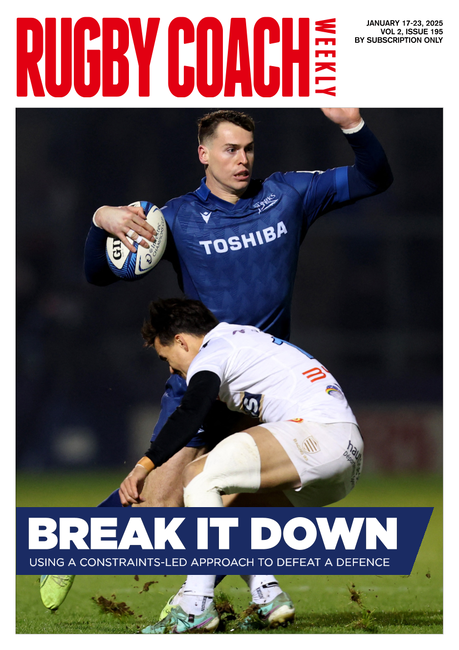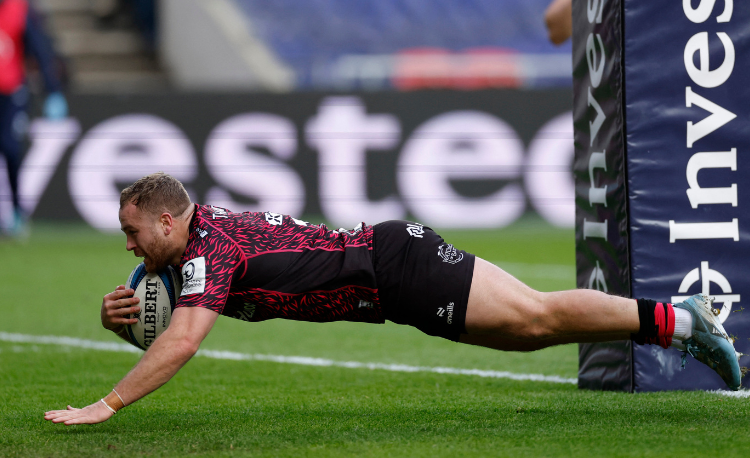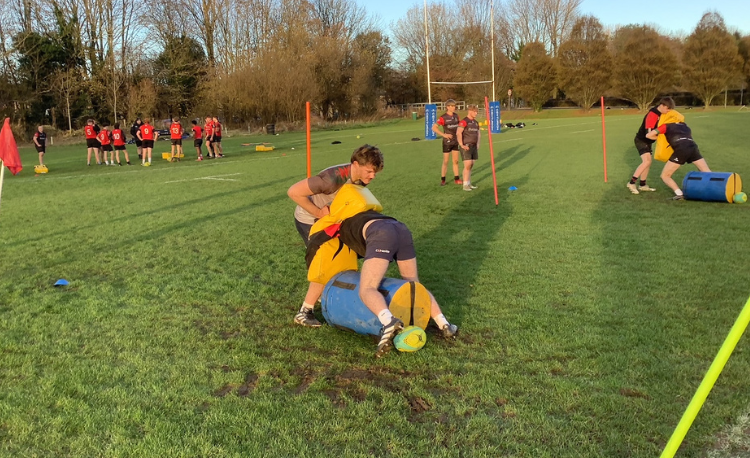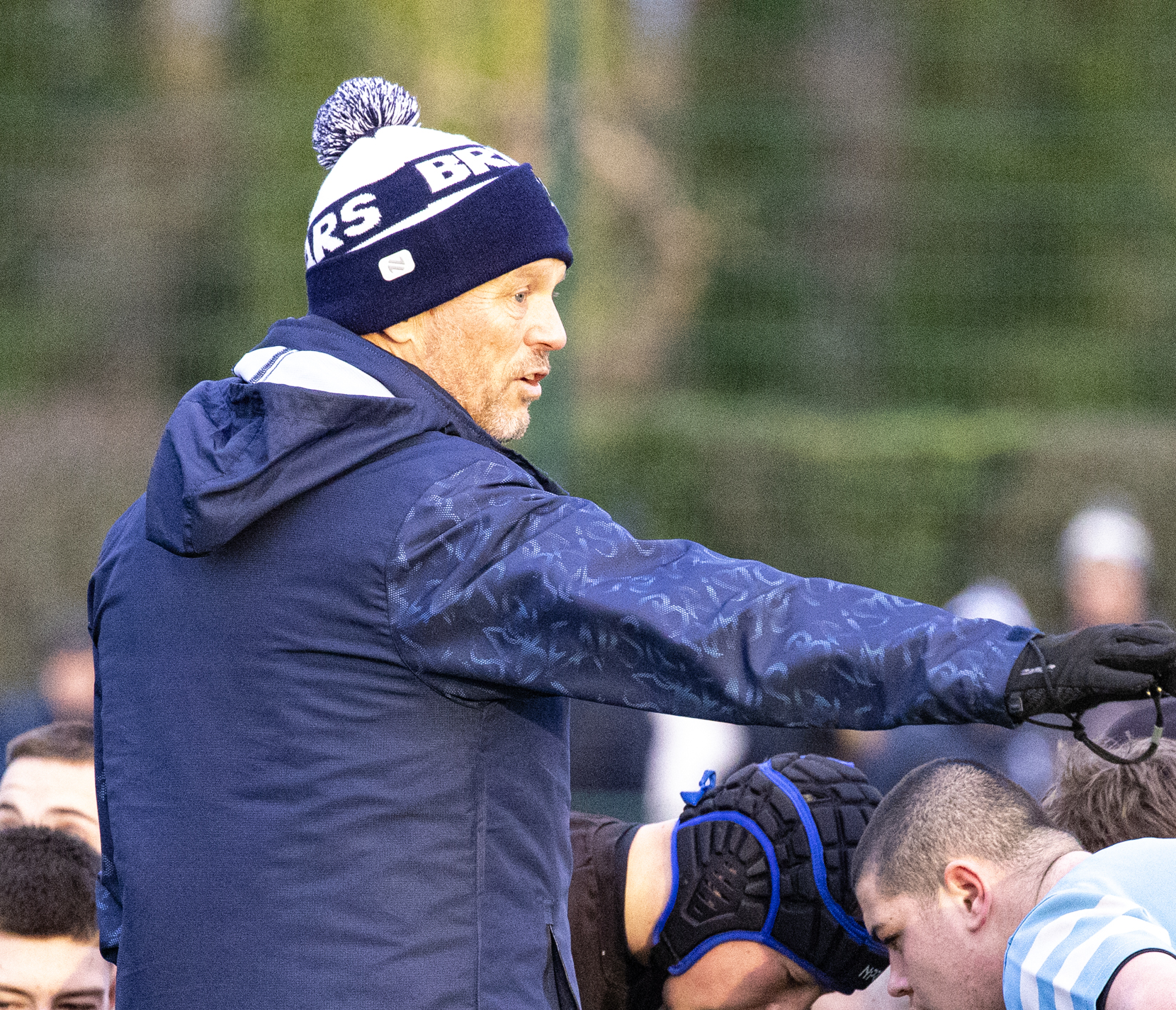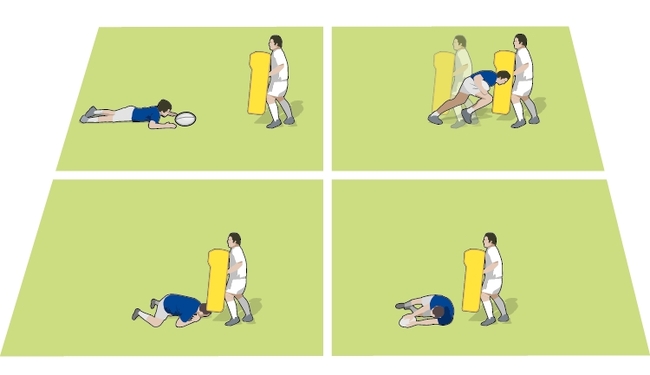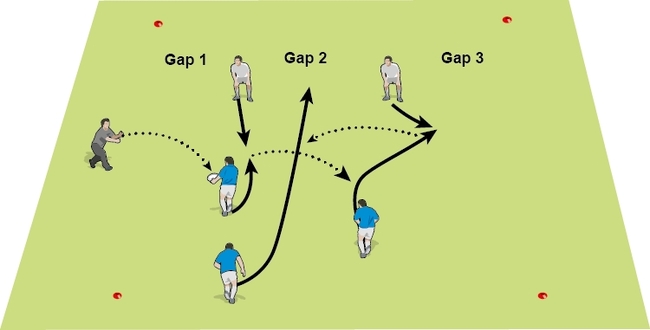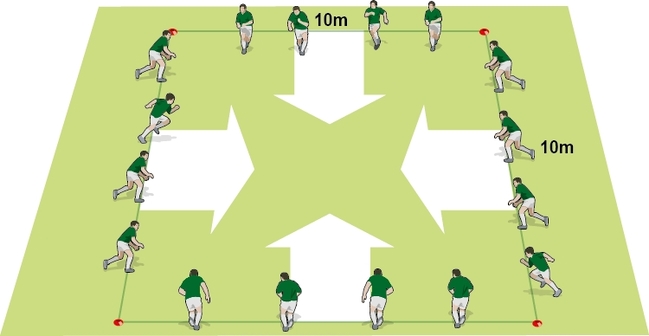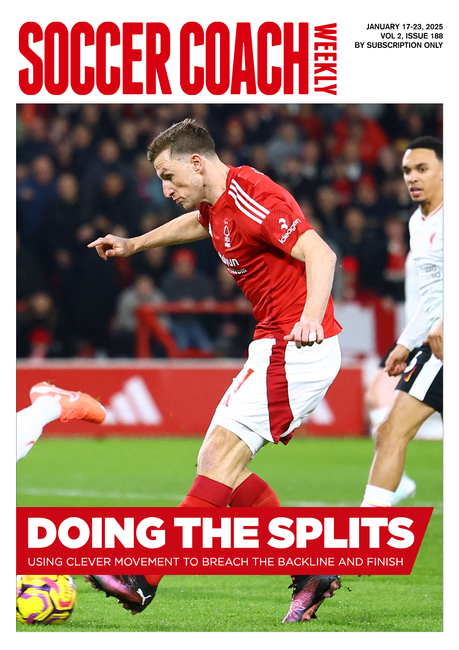Making your players 'Contact Confident'
From landing safely to ensuring player and coach buy-in, an introduction to World Rugby’s new resource from one of its key drivers, DR ANNA STODTER.
The Contact Confident resource on World Rugby’s website was developed to create evidence-informed coaching activities that promote confidence, physical competence and safety in the contact area.
It is about managing the body as a ball carrier in the tackle, and works for players who have not played before, haven’t played much or have taken a break from the game.
It is also suitable for more experienced players who might have had a bad game, need a boost in confidence or want to improve their technique.
A contact-confident player is safe and effective in contact situations. This comes through good coaching, developing a player’s understanding of which technique to use and being able to do it under pressure.
The programme was inspired by research into head impacts. These were measured using instrumented mouthguards.
The evidence gathered by Dr Elisabeth Williams at Swansea University found that some of the biggest impacts came from players hitting their heads off the ground in a whiplash manner.
It is probably more pronounced in the women’s game because of the wider range of experiences and training ages. I started playing at 25 and no-one taught me to tackle before my first game of full-contact rugby.
As a coach, you can use the Contact Confident principles as a template to check whether even experienced players use strong and safe techniques.
There are so many varied pathways, with different coaching ideas, that there may be something a player needs to catch up on.
A coach has two detailed resources available from World Rugby - Tackle Ready and Contact Confident - which give them the tools for safer, stronger and more effective players.
Ground contact detail
A ball carrier needs to understand how to fall and land safely.
It may be that they are bouncing off and out of a tackle or they are grappled to the ground by the tackler.
The first key point in doing this safely is that the faller needs to create a big surface area when they land. A small surface area, like putting a hand out, will cause problems.
This should be remembered by the ball carrier as they are tackled. If they have just offloaded the ball, they may think, "That’s my job done" - but the full job is to land safely, preventing the whiplash effect, so they can participate in the next phases of play.
The falling ball carrier should focus on preventing a sudden jolt when the ground impact happens.
It can be likened to the elasticity of a bobble on a bobble hat. To avoid ’bobbling around’, players should be braced as they fall, tucking in their chin (like making a double chin) while keeping a neutral neck and back position.
Coaching confident
One reason why something might not be coached is that the coach isn’t confident in the material.
It might be that its too focused on the science, or the exercises are less appealing because there is no perceived connection to the game.
Contact Confident is certainly research-led, integrating science into a dynamic rugby situation. It also draws on the work of people like Dr. Katrina McDonald, Dr. Danielle Salmon and Janelle Romanchuk, who have all used neck-strengthening and martial arts principles, especially from judo, to develop training exercises.
| MIN. | EXERCISE | KEY POINTS |
| 0 - 2 | Paired teddy bear rolls – introduce a ball and pop pass to another pair |
|
| 2 - 4 | Deep neck flexor nod (10-second hold x5) Deep neck flexor lift (5-second hold x5) Bear crawl (10 seconds+) Bear crawl partner nudges (10 seconds+) |
|
| 4 - 6 | Drop height and fight |
|
Since rugby coaches aren’t martial arts coaches, they may feel they won’t be able to implement the ideas. That is why we have worked hard to make them practical.
First, it needs to be sold as a good solution. Players haven’t come along for a judo session, so it needs to look like rugby.
As it happens, our research into the impact of this programme showed that players felt valued by coaches putting time and effort into improving their safety. This is important for all stakeholders in the game, mainly because of the headline news more recently.
Once on the pitch, we can ’hide the vegetables’ - in other words, we put the good principles into our sessions while making them look like the game of rugby.
For example, plenty of ’animal walks’ exercises support players’ contact development. With younger players, you can easily mix these into a game or a warm-up. For older players, you might need to tailor it to their context.
Another example, in a touch game, if the player is tackled, they put the ball between your legs and bear-crawl forward, or you restart a game after a knock-on with three players from each team doing a gorilla squat walk in a ‘restart box’ area. You pass the ball to whoever shows the best form. This could also be used to trigger a live 1v1 tackle restart from a lowered position, which reduces speed and momentum.
The game continues as touch but you could use live restart boxes to introduce different types/scenarios of tackle.
A gorilla walk is where a player moves forwards and backwards three metres, swinging their arms, before they are allowed into the game. If they fall over, they can use the brace position.
Another idea, based on partner carries after a tackle, the tackler and one other player must form a piggyback and then get back into the defensive line; or a restart has a wheelbarrow back-and-forward movement.
Partner balance and bodyweight exercises are ideal in the warm-up phase. You could play a low-level game of touch rugby and then break for a minute to do some exercises before returning to the game.
The neck-strengthening exercises can be built into your pre-contact warm-ups. Lots of them are partner-based; some are competitive, so are ideal for the end of the warm-up to build energy. Others require more concentration, meaning they are best done more slowly.
Players could do these as arrival activities before beginning a team warm-up, in the gym or even at home.
Training the principles
In a specific exercise, you will be laser-focused on the suitable technique you are looking at.
In the rest of the training, you need to keep your awareness high but you don’t want to stop and start training all the time.
There are two ways to keep the flow while feeding back on good and bad practices.
The first is individual hot feedback, where you speak to a player specifically when you see something that needs attention. It must be quick, with language they understand. You can then follow this up later.
Secondly, you can highlight points in the review after each section. Again, it should be just one point using the terminology you’ve been discussing.
Related Files
Newsletter Sign Up
Coaches Testimonials

Gerald Kearney, Downtown Las Vegas Soccer Club

Paul Butler, Florida, USA

Rick Shields, Springboro, USA

Tony Green, Pierrefonds Titans, Quebec, Canada
Subscribe Today
Be a more effective, more successful rugby coach
In a recent survey 89% of subscribers said Rugby Coach Weekly makes them more confident, 91% said Rugby Coach Weekly makes them a more effective coach and 93% said Rugby Coach Weekly makes them more inspired.
Get Weekly Inspiration
All the latest techniques and approaches
Rugby Coach Weekly offers proven and easy to use rugby drills, coaching sessions, practice plans, small-sided games, warm-ups, training tips and advice.
We've been at the cutting edge of rugby coaching since we launched in 2005, creating resources for the grassroots youth coach, following best practice from around the world and insights from the professional game.
